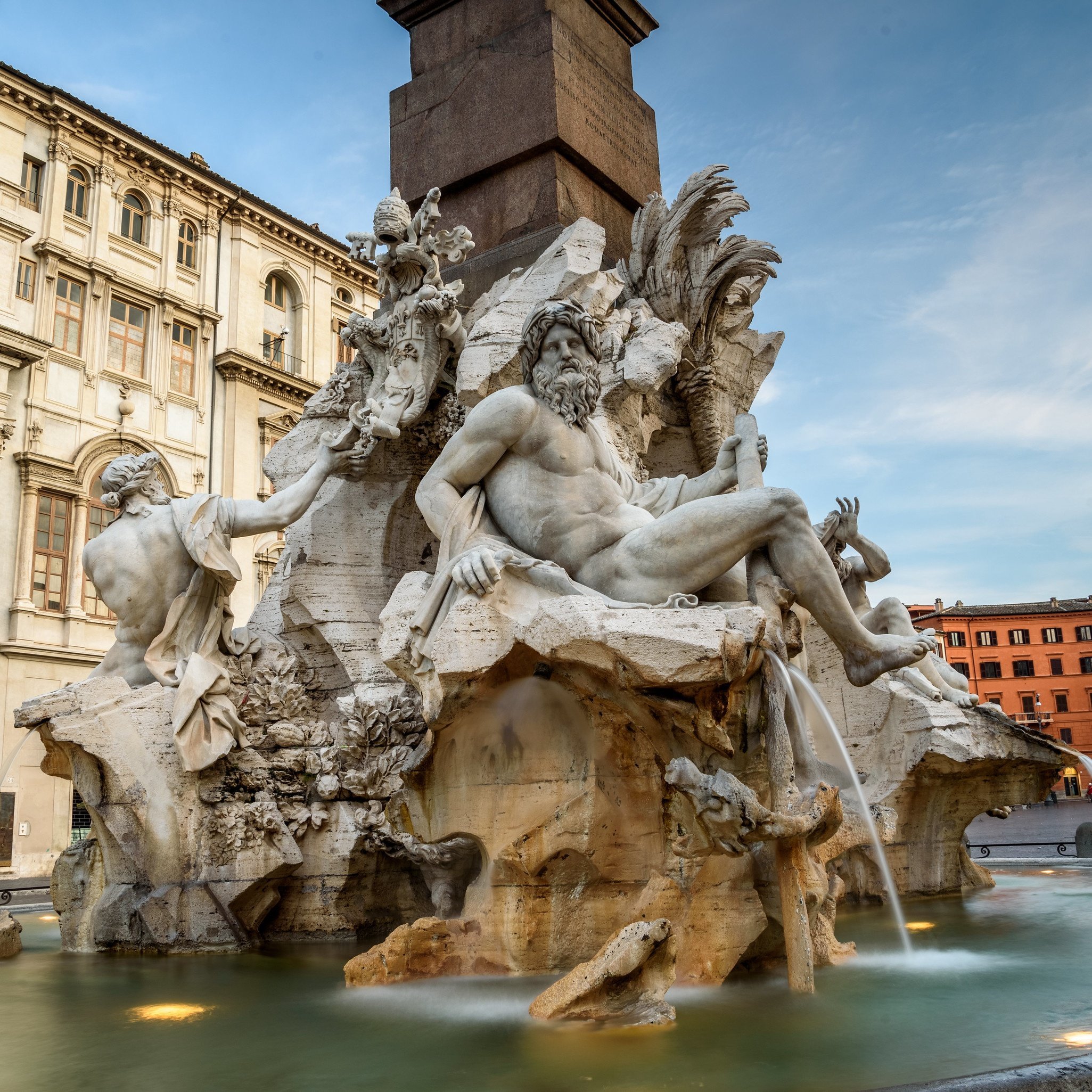Gian Lorenzo Bernini: Master Sculptor and Architect of the Baroque Era
Gian Lorenzo Bernini (1598–1680), a name synonymous with the Baroque art movement, was an Italian sculptor, architect, painter, and playwright whose work has left an indelible mark on the world of art. His mastery in sculpting marble into lifelike figures, his architectural innovations, and his dramatic use of light and shadow have made him a figure of enduring fascination.
Early Life and Rise to Fame
Born in Naples, Bernini was a child prodigy brought to Rome, where he would spend most of his life. His father, a renowned sculptor himself, was instrumental in Bernini's early training. By his early twenties, Bernini had already begun to revolutionize the world of sculpture.
Pioneering Baroque Sculpture
Bernini's sculptures are celebrated for their emotional intensity and dynamic forms. His works often featured intricate details that captured both physical movement and the subtleties of human emotions.
The Abduction of Proserpina (1622)
The Abduction of Proserpina
Created when Bernini was just 23 years old, this work depicts the mythological story of Pluto, the god of the underworld, abducting Proserpina. The sculpture is renowned for its realism – the way Pluto's fingers press into Proserpina's flesh showcases Bernini's extraordinary skill in rendering human anatomy.
David (1624)
Bernini's David breaks away from the traditional static pose, capturing the Biblical hero in mid-motion. Unlike Michelangelo's David, Bernini's figure is a dynamic embodiment of action, a moment before he slings the stone at Goliath.
Architectural Mastery
Bernini's architectural contributions are no less significant. He was deeply involved in the design and construction of several buildings and spaces in Rome.
St. Peter's Baldachin (1634)
St. Peter's Baldachin (1634)
This monumental bronze canopy over the high altar of St. Peter's Basilica is a testament to Bernini's skill with large-scale architectural projects. It marks the burial site of St. Peter and stands as an iconic example of Baroque art.
The Fountain of the Four Rivers (1651)
The Fountain of the Four Rivers (1651)
Located in Rome's Piazza Navona, this fountain is an architectural marvel. The four river gods represent the major rivers of the continents where papal authority had spread: the Nile, the Danube, the Ganges, and the Río de la Plata.
Bernini's Influence and Legacy
Bernini played a pivotal role in defining the Baroque style, which emphasized movement, detail, and emotional intensity. His innovative techniques in sculpting and his ability to integrate various art forms (sculpture, architecture, and painting) had a profound impact on the visual arts.
Early Life and Rise to Fame
Born in Naples, Bernini's prodigious talent was evident from a young age. His father, a skilled sculptor, played a crucial role in nurturing this talent. Moving to Rome, Bernini quickly established himself as a revolutionary figure in the world of sculpture.
Pioneering Baroque Sculpture
Bernini's sculptures, known for their emotional depth and dynamic forms, pushed the boundaries of Baroque art. His "Abduction of Proserpina" and "David" are prime examples of his ability to capture movement and emotion in stone, challenging and expanding the artistic norms of his time.
Patronage and Artistic Endeavors
Bernini's career was significantly shaped by his patrons, most notably the Catholic Church and several Popes. His relationship with these powerful figures provided him with the resources and platforms to execute his grandest projects. The Church's patronage was instrumental in allowing Bernini to undertake large-scale sculptures and architectural designs, including the Baldaquin in St. Peter's Basilica.
Bernini's Personal Life
Away from his sculptures, Bernini's life was filled with drama and passion. He was known for his fiery temperament, which often spilled over into his personal and professional relationships. His rivalry with contemporary Francesco Borromini was intense and well-documented, marked by both artistic competition and personal animosity.
Gian Lorenzo Bernini
Bernini's love life was equally tumultuous. His affair with Costanza Bonarelli, which ended in scandal and violence, is a testament to the passionate and sometimes uncontrolled nature of his personal affairs. This aspect of his life often intersected with his professional world, impacting his standing and relationships within the artistic community of Rome.
Conclusion
Gian Lorenzo Bernini was more than an artist; he was a storyteller whose medium was marble, bronze, and the very city of Rome. His ability to infuse static materials with life, emotion, and movement has left a lasting legacy in the art world. His works continue to captivate, bridging the gap between the divine and the earthly, the imagined and the real, the past and the present. Bernini remains a towering figure in the world of Baroque art, his life and works a fascinating blend of artistic brilliance and human complexity.




